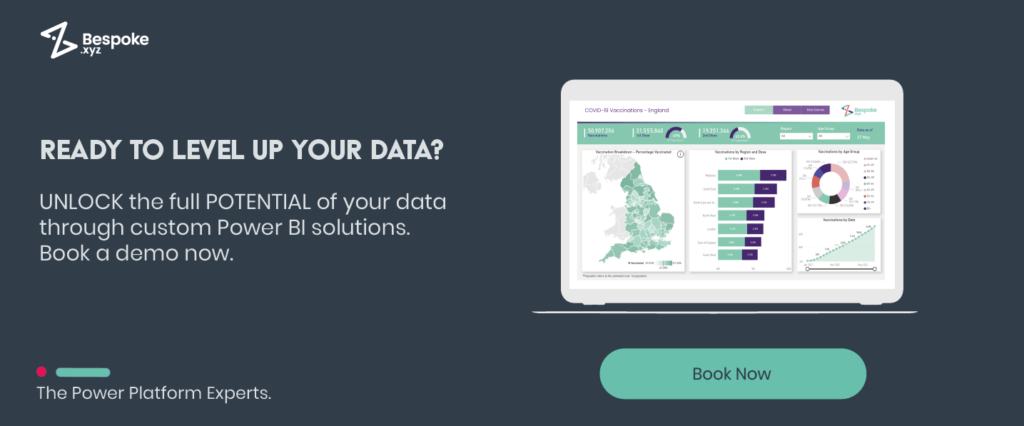You’re thinking about switching to Power BI – smart move! It’s a big decision. One that can streamline your data strategy and save you money, regardless of whether you use Tableau, Qlik, Access, or even spreadsheets.
In this blog, we’ll cover the top five benefits of migration to Power BI and how it can transform your data analytics.
Why Migrate to Power BI?
You’re probably already using Microsoft tools like Excel, SharePoint, and Teams, which kinda makes migrating to Power BI a bit of a no-brainer! Why juggle multiple platforms when you can have everything in one place?
Plus, if you’re spending thousands on additional licences for systems like Tableau, moving to Power BI can seriously cut costs (especially if you’re switching from the Microsoft E3 licence to the E5 – because Power BI is included).
5 Benefits of Power BI Migration
1. Seamless Integration with Microsoft’s Ecosystem
There’s nothing worse than having to jump between platforms trying to piece together a report. Power BI’s built-in integrations with tools like Excel, Azure, and SharePoint mean you can automate data flows, collaborate with your team in real time, and centralise all your data in one place.
Whether you’re pulling data from an Azure database or pushing insights into Microsoft Teams, it’s all streamlined and cohesive – no more manual workarounds.
2. Cost Efficiency
With its tiered pricing options, Power BI is generally more cost-effective than platforms like Tableau, especially for large organisations looking to scale.
Plus if you’ve got an E5 license, you already have Power BI included. That means migrating from a high-cost platform like Tableau can save you tens (or even hundreds) of thousands in annual licensing fees. This can free up your budget for new initiatives, technology investments, or even hiring new talent.
3. Ease of Use and Learning Curve
Adoption is always a concern when it comes to switching software.
Power BI’s interface is designed to be intuitive and easy to use, especially for anyone familiar with the Microsoft suite (which most people are).
There’s usually no need for months of training – most teams are up and running in weeks, building interactive dashboards and generating insights that actually make sense to everyone in the business, not just IT experts.
4. Advanced Data Modelling Capabilities
Getting stuck in messy spreadsheets trying to manipulate data?
With Power BI’s built-in Power Query, you can shape and transform data directly within the platform, no need to wrestle with third-party tools or lengthy processes.
One of our clients went from spending hours manually reconciling data to having automated models that refreshed in real time – saving them 4 days each month.
5. Built-in AI and Machine Learning
With all the talk around AI and machine learning, it can feel a little intimidating, but Power BI makes it super accessible for everyone.
Features like Copilot Studio, key influencers, and AI visuals, you can analyse your data, predict trends, and get deeper insights without being a tech expert or knowing code.
You can ask questions like “what’s causing our drop in Q2 sales?” and get an instant, AI-generated answer with visuals that let you dig deeper.
Migrating to Power BI from Other Platforms
Change can feel scary. But with the right planning and a clear roadmap, migrating to Power BI becomes a strategic move that not only improves your data capabilities but sets your business up for long-term success.
Whether you’re coming over from Tableau, Qlik, or Access, it’s all about making sure you get the most out of your new setup.
Migrating from Tableau to Power BI
Migrating from Tableau to Power BI isn’t just about replicating reports – it’s about leveraging the strengths of Power BI to enhance your analytics capabilities.
Power BI’s deep integration with other Microsoft products like Excel, Teams, and SharePoint means your organisation can build on existing tools rather than starting from scratch.
- Dashboard Replication: One of the first steps is to recreate existing Tableau dashboards in Power BI, ensuring that all visualisations, data models, and insights are retained.
- Data Integration: Power BI connects natively with Microsoft products and hundreds of other data sources, which simplifies integrating and harmonising all your data sources into a single, unified view.
- Collaboration Enhancement: Power BI integrates seamlessly with Microsoft Teams, making it easier for users to share insights, collaborate on dashboards, and embed reports directly into conversations.
Migrating from Qlik to Power BI
If you’re currently using Quik, you probably love the data manipulation capabilities, but migrating to Power BI opens up a wider range of options for advanced analytics and easier collaboration.
The transition typically focuses on translating Qlik’s complex data models and visualisations into Power BI’s more user-friendly interface.
- Rebuilding Data Models: Power BI’s Power Query and DAX capabilities provide a robust environment for translating Qlik’s data models. This allows users to maintain the same level of data complexity and control while also benefiting from Power BI’s flexibility and features.
- Adoption and Training: Since Power BI is part of the broader Microsoft ecosystem, the learning curve is significantly reduced. Users who are already familiar with Excel or other Microsoft tools find it easier to adapt.
Migrating from Access to Power BI
Switching from Access to Power BI allows you to handle larger datasets, provide a more interactive reporting approach, and scale beyond Access’s limitations. The real-time analytics and interactive dashboards in Power BI offer more insight and faster access to critical information than static reports.
Data transformations become easier, and the platform’s intuitive design means faster adoption by teams without losing any reporting capabilities.
- Upgrading Data Capabilities: Power BI scales effortlessly, handling larger datasets and enabling quicker analysis of complex data.
- Improved Reporting and Dashboards: Create interactive, real-time dashboards that let users drill down, apply filters, and make decisions faster than with Access’s static reports.
Migrating from Spreadsheets to Power BI
Most organisations start out with spreadsheets. And they’ve probably served your organisation well until now. However, they’re just not powerful enough to cope with large or complex data sets.
Moving from spreadsheets to Power BI allows you to automate processes, improve data integrity, and access deeper insights.
- Automation and Scalability: Power BI removes the need for manual updates by connecting directly to data sources and automatically refreshing reports, making it scalable for larger datasets.
- Visual and Analytical Power: Create interactive dashboards that provide insights at a glance, far beyond what’s possible with static Excel charts.
Real-World Results of Power BI Migration
Migrating to Power BI delivers real, measurable outcomes.
Here’s how some of our clients have benefited:
- Otsuka: Saved 4 days of manual processing making the switch to Power BI
- Sobi: Unified their data sources, enabling real-time insights and faster decision-making.
- Rhodar: Saved a number of hours across the business through multiple team members, increasing efficiency, accuracy and cost savings.
You can check out some of our other Power BI success stories here.
Ready to Make the Move to Power BI?
Migrating to Power BI is more than just changing software – it’s about transforming the way your business operates. Learn more about our Power BI Migration process – stop juggling multiple tools and bring everything together in one place.
Whether you’re looking to gain real-time insights, streamline reporting, or cut costs, Power BI offers a robust, scalable solution that can grow with your organisation. Get in touch today to see how Power BI can help you unlock the true value of your data and how we can support you in adopting the Power Platform technologies.


